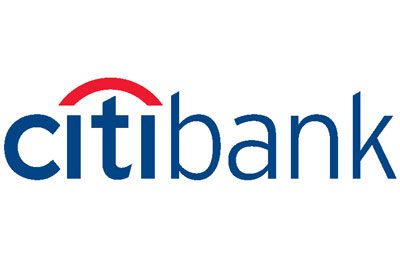Citigroup opened its first office in India in Kolkata (Calcutta) in 1902. With capital nearing US$ 1 billion it is the single largest foreign direct investor in the financial services industry in India. It has become one of India’s most diverse and recognized financial service providers operating through 40 branches of Citibank N.A. across 20 cities and through various finance companies operating directly/indirectly out of locations across the country. Citigroup India offers a complete range of corporate and investment banking services under the “Citigroup” brand name, consumer banking products and services under the “Citibank” banner and consumer finance under the “CitiFinancial” banner. Citigroup has a customer base of over 900 large corporate, over 22,000 small and medium enterprises and over 3,500,000 retail customers. The global corporate and investment banking group provides a range of financial services including treasury management, transaction services including cash management and trade services, securities custodianship, foreign exchange, fixed income and equities sales and trading, and corporate finance to corporate clients, governments and financial institutions. In retail banking, Citibank offers credit cards, mortgages, personal loans, auto loans, insurance, and investment services for customers. In addition to the above, Citigroup has significant investment through its venture capital arm in various software/non-software companies in India, the primary ones being i-Flex Solutions Limited and Polaris Software Labs Limited. Citigroup was also one of the pioneers in housing its back office processing/call centre company for its global activities in India through e-Serve International Limited.
Products and Offerings
- The Citibank India offers a varied range of financial assistance to its customers like:Deposit Accounts – Savings Accounts, Current Accounts, and Term deposits.
- Loans – Personal Loans, Home Loans, Loan against property, Auto Loan, Ready Credit
- Credit Cards – Citibank Gold Card, Jet Airways Citibank Gold Card, Hutch Citibank Card, IndianOil Citibank Card, Shoppers’ Stop Citibank Card, MTV Citibank Card,Citibank Silver International Card, CRY Card, WWF Card, Times Card, Citibank Cricket Visa Card
- Investments – Mutual Funds, Demat
- Insurance – Life Insurance Solutions, Credit Insurance, Health Insurance, Travel Insurance
- Banking – Suvidha Account, Debit Cards, Citibanking, CitiGold Wealth Management
- CitiBusiness – Current Account, Loans, CitiBusiness Card
- NRI Services – Rupee Checking Account, India Deposits
- Online Services – Internet Banking, Bill Payment, Statement on E-mail, E-Commerce, CitiAlert
Cash Management services
Citi integrated receivables and payables solutions with diverse ERP systems in India, and implemented host-to-host mode of data processing with our customer back-office systems. Citibank, India has implemented payment gateway solutions (CitiConnect) which fulfil the financial settlement and e-credit needs of customers. Worldlink and CitiDirect @Online Banking ensure the completeness of solution by incorporating cross-border CM needs. In India, Citibank has pioneered the development of automated self-service kiosks (Citibank Easy Payment Centers) which facilitates bill collections on a “24/7/365” basis. It is an unique solution that offers consumers the flexibility of multiple payment options including cash and cheque and more importantly provides a “receipt” as proof of payment.
Credit Risk Management Practices
Like most of the banking industry during the late 1980s and the early 1990s, the high concentration of leveraged buyout and commercial real estate loan defaults that besieged Citibank provoked former CEO and Chairman John Reed to take an active role in reassessing the bank’s credit risk management practices. Citibank began to restructure the corporate lending and credit functions to incorporate a credit portfolio management strategy. Citibank began to emphasize the development of credit risk measurement techniques for loans similar to an options valuation model that would support the mark-to-market analysis and portfolio credit risk for the entire bank’s portfolio. Although the focus was mainly on large corporate and middle market facilities, it eventually led to the development of Citibank Loan Index (CLI). The index was designed to function like a equity or bond portfolio through which loans are bought and sold based on performance objectives. Loans that did not meet the performance objectives were sold off or transferred according to the index objectives.

what was the marketing approach of citibank in india? how did they enter ti di business in india?